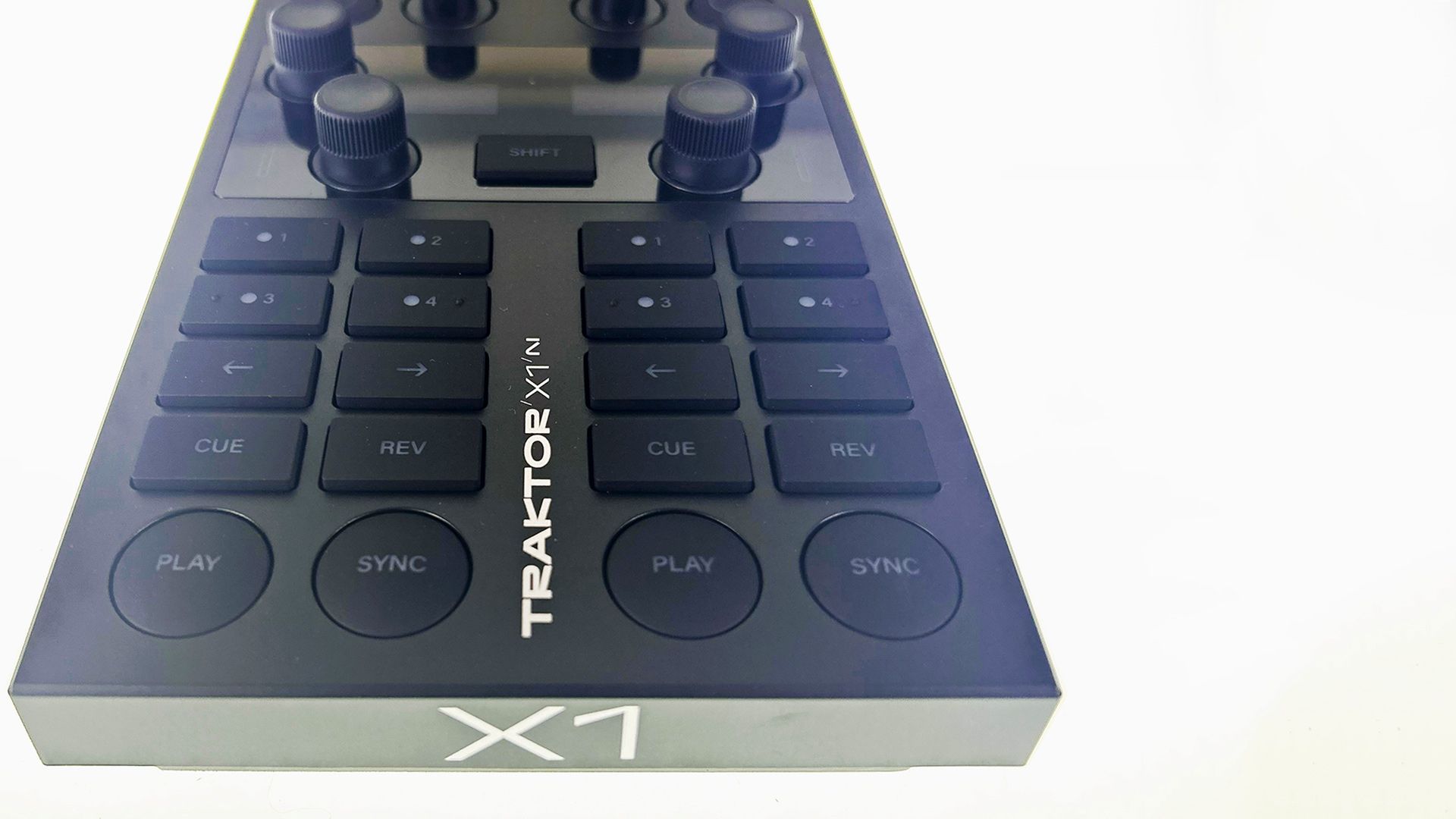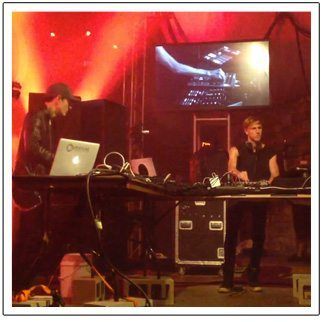Push is a new controller from Ableton that features a high-performance 64-button grid, backlit LED screen, and a plethora of function buttons dedicated for total control over Ableton. Although at quick glance Push might look a bit like a Novation Launchpad on steroids, it’s actually much more. Read and watch Mad Zach’s full review inside:
PUSH: THE INSTRUMENT
The buttons, layout and build quality indicate that this controller was carefully engineered to be played like an instrument, opposed to just another controller.
The whole unit feels very well-constructed and you can tell right away it will certainly endure the rigors of the road. As a finger drummer, my first instinct was naturally to begin tapping the buttons percussively and I was quite impressed by their feel and response. Unlike the Launchpad buttons which are mushy and absorb your hits, Push’s buttons feel tight, and actually bounce your fingers back, making them suitable for fast, technical drumming and crabs.
Reviewed: Ableton Push
Price (MSRP): $599
Available: Pre-order now in the DJTT Store
Communication: MIDI over USB
Ships with: USB cable, quickstart guide, power supply, included Ableton software
Weight: 2990g (6.6 lbs)
Dimensions: Width: 370mm (14.57 inches)
Depth: 293mm (11.54 inches)
Height (body): 26mm (1.02 inches)
Height (body + encoders): 46mm (1.81 inches)
System Requirements (Minimum):
• PC or Mac with free USB port or powered USB hub
• Ableton Live 9
The Good: Great feeling buttons with accurate velocity sensitivity and nice rebound (suitable for clip launching and finger drumming). Impressively bright LED’s with included power supply. Groundbreaking integration with Ableton lets you build grooves and compose songs without ever touching a mouse. Super long throw touch fader with pitch bend resolution.
The Bad: A bit on the heavy side. Although the knobs feel smooth, they are endless rotary and are not optimal for extreme knob twisting and controllerism. Grouped drum racks behave like instruments. Drum rack grid on left side (would have made more sense on the right). Would have liked to see more routing and sound design tools accessible through the hardware.
The Bottom Line: This versatile and thoughtfully engineered control station makes working with Ableton a much more musical experience. A true “instrument,” Push gives us an intuitive and expressive way to build songs, grooves, melodies, and harmonies. Although it doesn’t do anything we couldn’t technically do before using a mouse, it excels in recontextualizing the Ableton platform and getting you into music world instead of mouse land.
THE GRID
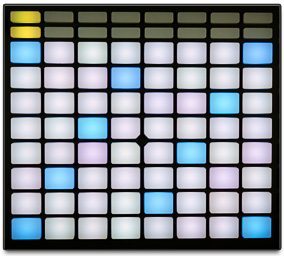 While the 64 button grid is a familiar layout for those used to working with Launchpad, Push manages to completely re-contextualize the grid through well designed full-color LED implementation and vastly improved button quality. The first thing I noticed when I got Push out of the box was how uniquely musical the buttons are. Unlike most MIDI buttons these days, which feel a bit like trying to have fun jumping on a futon, the Push’s buttons are more akin to frisking around a professional trampoline doing back-flips. Granted they could be just a smidge bigger but Ableton has compensated for that by giving them a rectangular shape that makes sufficient space for your fingers to roll, tap, etc with relative ease.
While the 64 button grid is a familiar layout for those used to working with Launchpad, Push manages to completely re-contextualize the grid through well designed full-color LED implementation and vastly improved button quality. The first thing I noticed when I got Push out of the box was how uniquely musical the buttons are. Unlike most MIDI buttons these days, which feel a bit like trying to have fun jumping on a futon, the Push’s buttons are more akin to frisking around a professional trampoline doing back-flips. Granted they could be just a smidge bigger but Ableton has compensated for that by giving them a rectangular shape that makes sufficient space for your fingers to roll, tap, etc with relative ease.
SCALES
Naturally, with my finger drumming background I started with a drumrack, but zip over to an instrument and the LEDs really go to work. With the sprawl of 64 notes in front of you, it is a great tool for composing melodies, chords, and actually writing music. The brilliant white and blue LEDs indicate your position in the scale and do really make music theory an intuitive, logical experience.
The best part is definitely the “scale” button, which allows you to select from a large number of interesting music scales. If you’ve ever played a marimbaphone or other “pre-tuned” instrument you’ll know how ridiculously fun it can be to have every note sound good. I call this mode the “al dimiola” mode because this is how he must feel on guitar. Solos are something I feel has been missing from electronic music and now I expect a whole slew of controllerist van halen’s to emerge from the woodwork’s. The introduction of Push will no doubt usher the hairmetalcontrollerism movement. What will be the “Stairway to Heaven” of controllerism?
THE TOUCH STRIP
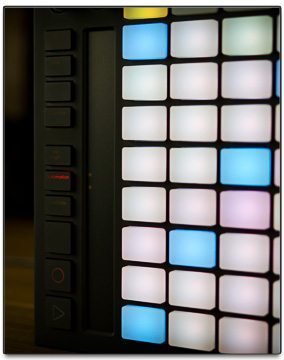 Located to the left of the button grid is an impressively long touch strip with LED position indicators. So far the strip has been quite useful and fun.
Located to the left of the button grid is an impressively long touch strip with LED position indicators. So far the strip has been quite useful and fun.
In drum rack mode, you can use it to move through your “banks” scrolling with ease through the drum rack. One complaint I had about this was that I was getting stuck notes if I tried to scroll to aggressively with my left hand while playing a beat with my left. This makes sense because on a typical controller, if you change banks while holding down a note, it will stay on.
That said, I still think they should formulate a workaround because that strip is just begging to be throttled and right now I’m having to be just a little too nice to it. In instrument mode, the strip becomes a pitch bend, which is awesome because you can use the strip to do jump point pitch bending. This is great for solos and actually much more accurate than I had initially expected.
PUSH’S TWO WINDOWS
There are two main windows on the Push, the “note” and “session.”
In note mode, you can play drumracks, and step sequence grooves. It’s also possible to compose various loops and/or combine them into one longer loop. While I do like the concept, my only complaint here is that the 4X4 grid is on the left side. It would have made much more sense to me (as a right-handed individual) to put it on the right so I could rip with my good hand while step sequencing and pattern navigating with my left.
Alternately, if you have an instrument loaded up, the note view gives you access to 64 notes of melody, which can be doctored using the “scales” feature to select your key, scale, and shred the paint of your studio walls. You can also use the buttons on the left to create new loops, select loop length, quantize, double, delete, and duplicate. In either view you can also record automation into your clips.
STEP SEQUENCING
As a 909 and 808 user for years, I have been waiting a long time for great software step sequencing to come around. Ableton has certainly given it a good go. It’s not perfect, but it’s pretty dang good!
Choose your step increment (between ¼ and 1/32th), loop length, position, and get sequencing. The best part is that you can also record parts manually, and then edit using the steps you recorded. It’s also nice that you can adjust the note “nudge” to get your rigid step sequences to feel a bit more natural and emotional. I was impressed by how easy it was to switch between 1/16 and 1/32 to throw in some fast hats or a more detailed sample position. Additionally, you can choose either between 16 unique loops, or combine them into one loop – this makes composing different parts super easy and fun.
THE KNOBS
I am not usually a fan of endless rotary encoders, but these are pretty nice. They are also touch-capacitive, meaning you can press them as well as turn them, although there is no click.
The reason people use endless encoders is not because they feel great, but rather that they integrate with presets and changing values much better than fixed rotary pots. Since these knobs are multi-function it does make sense that they be endless. Underneath them is a backlit LED display that changes to tell you what the knobs are controlling, depending on your navigation location at the time.
THE COMPETITION
To better understand how the Push fits into the controller landscape, it’s useful to look at it in the context of its peers. Sandwiched somewhere between a Launchpad and Maschine, Push takes the best elements of the two and combines them into one controller that truly brings out the best in Ableton.
The Push goes beyond the groovebox style of the Maschine to deliver a full-featured instrument as comfortable composing melodies and song structure as constructing dope beats. With 64 buttons vs. 16, the melodic and compositional possibilities are far greater. Not only that, but everything you create with Push is already perfectly integrated into Live, meaning you don’t have to fuss around with plugins and porting your ideas from Maschine to Live.
NOTHING BUT A SOUNDPACK
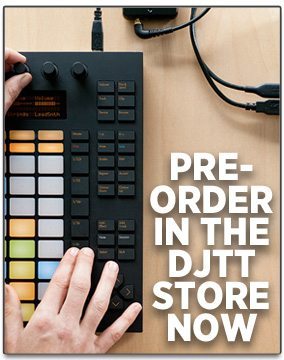 Push is a powerful, expressive controller. But, as with many digital performance environments, it’s only as powerful as the sounds you have loaded! Fortunately I was delighted to discover an solid synergy between my soundpacks and the new Ableton workflow.
Push is a powerful, expressive controller. But, as with many digital performance environments, it’s only as powerful as the sounds you have loaded! Fortunately I was delighted to discover an solid synergy between my soundpacks and the new Ableton workflow.
Since each soundpack comes loaded with drum sounds, bass-lines, atmospheres, one shots, risers, and character samples, you can literally compose a complete remix without ever having to look at the computer screen. Now that’s what I call a good time.
Pre-order your Push in our store and you’ll get exclusive access to my (Mad Zach’s) Push Sound Environment (a $50 value!) and template (which includes drum sounds, bass patches with preset macro’s for total skronkington 2000, interesting samples and dope lead instruments ready to shred).


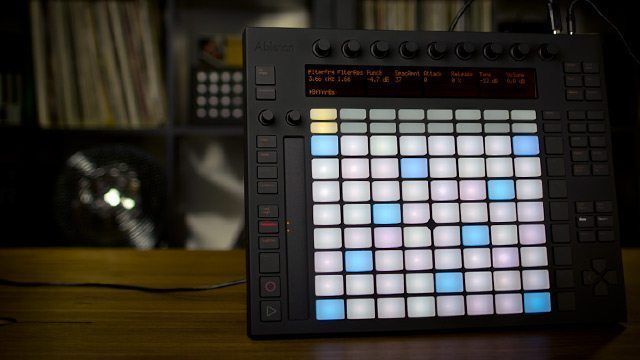




![ROLI’s Seaboard RISE 2: seamless integration into the expressive world of MPE [REVIEW]](https://s11234.pcdn.co/wp-content/uploads/2023/11/Screenshot-2023-11-16-at-5.02.41-pm.png)
